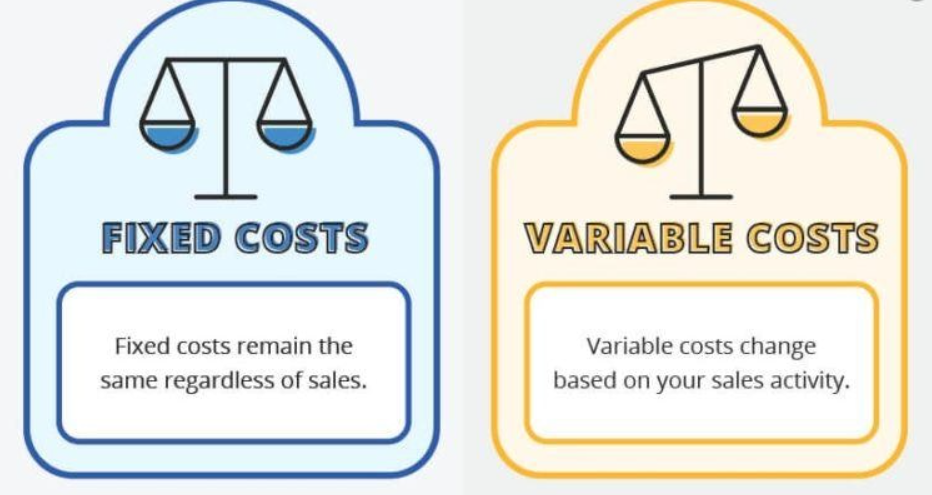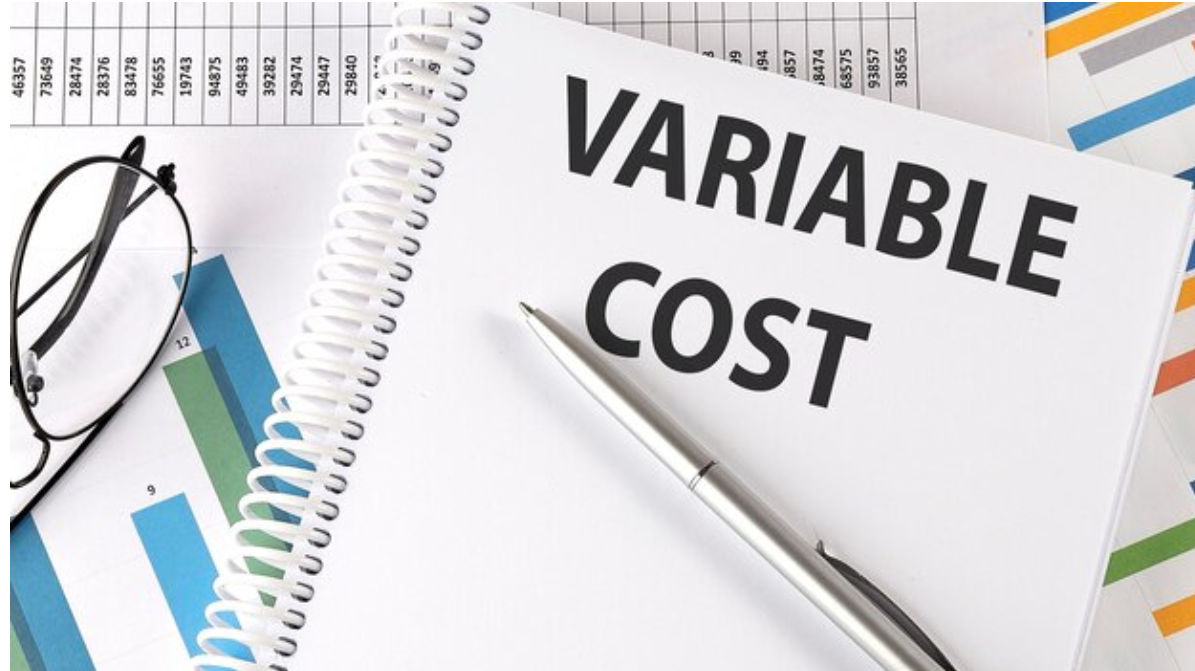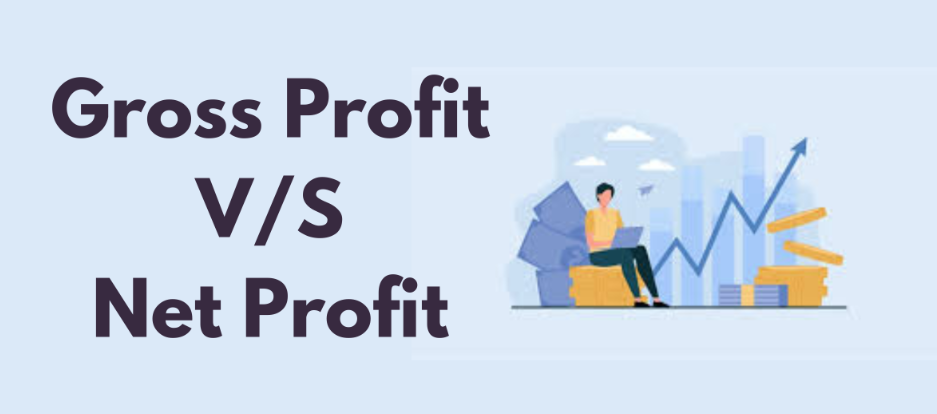Understanding Fixed and Variable Costs in Business
Businesses suffer from two different categories of costs in their operations: fixed costs and variable costs. It is essential for efficient financial management to comprehend the distinctions between these costs. Irrespective of the volume of production or sales, fixed costs are expenditures that never change. Regardless of whether the business is running at full capacity or not, these costs are incurred and do not alter in the near future. Lease payments, insurance premiums, permanent staff salaries, and asset depreciation are a few instances of fixed costs.
Variable Costs in Business
However, costs that vary directly with the volume of production or sales are known as variable costs. When a business’s activity varies, so do these costs. When production grows and drops, variable costs follow the same pattern since they are directly related to the level of output or sales. Commissions from sales, direct labor costs, raw materials, and packaging materials are a few instances of variable costs. Because they are more flexible and may be changed in response to changes in business activity, variable costs are sometimes seen as being easier to manage than fixed costs.
Distinguishing Between Fixed and Variable Costs
Regarding how they react to variations in business activity, fixed costs and variable costs vary primarily from one another. Although variable costs vary in direct proportion to the volume of business activity, fixed costs are fixed and do not vary with changes in output or sales. Because it affects their cost structure and profitability, firms should be aware of this difference. Businesses may determine the best pricing strategies, output levels, and cost-control methods by carefully examining their fixed and variable costs. Although properly managing variable costs may provide flexibility and the capacity to adapt to changes in the market, controlling fixed costs can help firms retain stability.

Table of Differences between Fixed Cost and Variable Cost
| Characteristic | Fixed Cost | Variable Cost |
|---|---|---|
| Nature | Remains constant regardless of production or sales volume | Varies proportionally with production or sales volume |
| Definition | Costs that do not change with changes in production or sales | Costs that change with changes in production or sales |
| Examples | Rent, insurance, salaries | Raw materials, labor, utilities |
| Behavior | Remains constant over a certain range of activity | Varies proportionally with activity level |
| Planning | Relatively easier to plan and predict | More challenging to predict accurately |
| Responsiveness | Less responsive to short-term changes in production | More responsive to short-term changes in production |
| Impact on Profitability | Fixed costs must be covered before profit is made | Variable costs directly impact profitability with each unit produced |
| Control | May be more difficult to control and reduce in the short term | May be easier to control and reduce in response to changes in activity |
| Cost Behavior Graph | Horizontal line on a graph | Upward-sloping line on a graph |
| Risk | Less risk in terms of fluctuating costs | More risk due to potential cost fluctuations |
Characteristics of Fixed and Variable Costs
No matter how much work is done or how much is produced, fixed costs are expenses that never vary. Whatever a business performs in terms of sales, production, or income, these costs never change. As an example, consider fixed costs such as rent, salary, insurance premiums, interest, and depreciation. The quantity of units produced and the services rendered, on the other hand, determine how variable costs change. Labor, materials, and client fees are a few examples of variable costs. Generally based on a company’s output, variable costs are expenditures that rise or fall in direct proportion to the volume of goods or services produced. While they constitute a benefit to the activity, fixed costs are not directly correlated with the volume of products or services produced. For example, rent is paid on a fixed monthly basis, regardless of the quantity of items produced. In contrast, labor costs are often influenced by the volume of goods or services generated.
Financial Planning and Decision-making
Making informed financial planning and decision-making in the business and finance worlds requires an awareness of the distinctions between fixed and variable costs. When evaluating a company’s profitability and general financial well-being, both categories of costs are important. Definitions, traits, and instances of fixed and variable costs will all be covered in this article.
Key characteristics that set fixed and variable costs apart
Stability: While variable costs vary based on production or sales volume, fixed costs stay the same.
Duration: Usually, fixed costs are accrued over a predetermined time frame, such as a month or three years. During such time, the amount of output or sales directly correlates with the variable costs used.
Management: Since fixed costs are necessary to keep up the bare minimum of business operations, they are sometimes harder to manage in the near run. Making changes to production or sales levels makes controlling variable costs easier.
Relevance to Accounting Research
To properly analyze financial data and make decisions, one must distinguish between fixed and variable costs. Businesses may calculate their breakeven point, assess profitability, and decide on prices by classifying costs into fixed and variable categories.
An organization may, for example, calculate the minimal sales needed to pay for fixed costs by understanding those costs. Understanding variable costs, on the other hand, makes it easier to figure out the most economical production levels and the incremental cost of creating further units.

Two essential elements of a business’s cost structure are fixed costs and variable costs
Variable costs vary depending on the amount of output, but fixed costs stay the same regardless of production or sales volume. To effectively manage finances, make decisions, and ensure overall business performance, one must comprehend the distinctions between various cost kinds. When it comes to costs, fixed costs are those that don’t fluctuate over time regardless of fluctuations in production levels, whereas variable costs often rise or fall in direct proportion to the volume of products and services a firm produces. Corporate taxes, rent, wages, interest payments, insurance premiums, and other operational expenses required to create goods are examples of fixed costs. Direct labor, material, and customer fees are examples of variable costs that often have a direct relationship to production.



